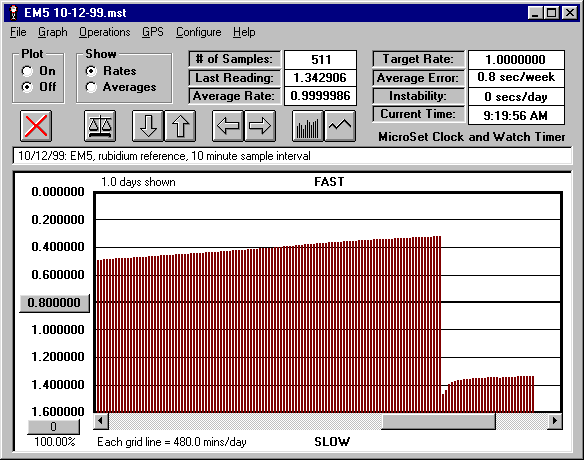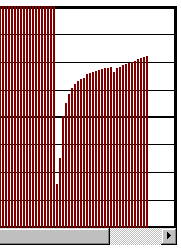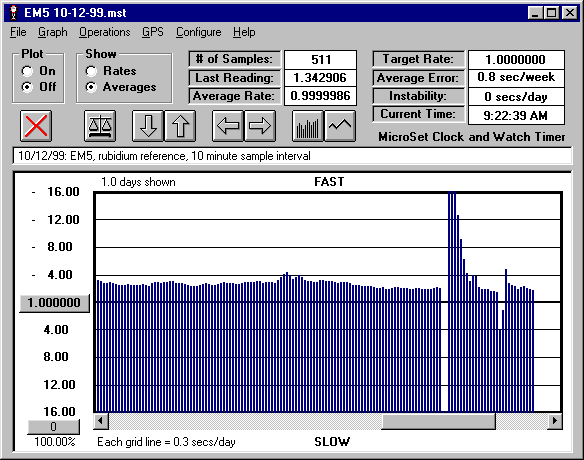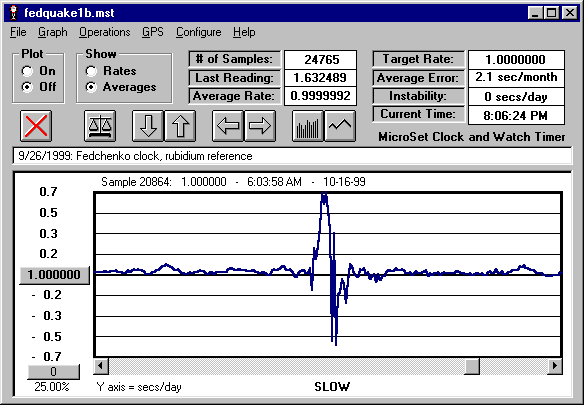On October 16, 1999, at 2:46 AM, a magnitude 7.1 earthquake struck Southern California near the town of Barstow. Called the “Hector Mine” earthquake, it afforded an opportunity to observe the effects of seismic disturbance on the motion of pendulum clocks. The only serious damage reported was an Amtrack train that derailed with no significant injuries. The following morning, people all over Southern California, Arizona, and Nevada reported pendulum clocks that stopped and, in some cases, stopped clocks that started. I live about 250 miles northwest of Barstow in Santa Barbara. Though we were not awakened by the quake, six pendulum clocks in our house stopped at the precise time of the quake. Many other clocks in the house did not stop. In our house, the clocks that stopped were not all facing in the same direction. Some were hung at right angles to others. It has been suggested that clocks can be stopped by seismic motion in the direction of swing, which can stall (or start up) a pendulum. When a clock is hung perpendicular to the seismic motion, the pendulum might rock into a descending weight and stall.
At the time of the earthquake I was logging data on one of my experimental clocks, designated “EM5”. I have no pictures of this clock on the web yet, but it is nearly identical in structure to EM4, which you can see if you click here. The clock was being measured by my MicroSet Clock Timer using the GPS interface with a rubidium reference oscillator (“atomic clock”) as the source of precision seconds.
The MicroSet timer was configured to take a reading from the clock every 10 minutes. The raw readings taken with the GPS interface consist of the time difference between the beat of the pendulum and the “tick” of the precision reference. If the clock is running fast, as this one was, the difference between the pendulum beat and the reference beat gets shorter and shorter. In the graph below, this is seen as a ramp up, indicating that the pendulum is gaining on the reference oscillator.

 Near the right end of the graph the ramp falls precipitously. The data point taken just before the drop was at 3:38 AM. The sample after the drop was taken at 3:48 AM, just after the earthquake. The difference in time between the two sides of the drop is about one second. This suggests that, when the earthquake occurred, the pendulum was “held up” for a full second. I don’t expect that this happened in one swing, but rather over the duration of the quake. It appears as a single transition in the graph because I was taking readings only once every 10 minutes.
Near the right end of the graph the ramp falls precipitously. The data point taken just before the drop was at 3:38 AM. The sample after the drop was taken at 3:48 AM, just after the earthquake. The difference in time between the two sides of the drop is about one second. This suggests that, when the earthquake occurred, the pendulum was “held up” for a full second. I don’t expect that this happened in one swing, but rather over the duration of the quake. It appears as a single transition in the graph because I was taking readings only once every 10 minutes.
Furthermore, you can see that there is a steeper up-curve in the data after the quake. This indicates that the pendulum rate had been affected too, and it took about 10 samples (100 minutes) for the rate to stabilize again. This is about what I expect for a rate disturbance in this clock. The pendulum has a Q that is high enough to require many minutes to reach equilibrium after it is disturbed. This is more easily seen if we “zoom in” on this portion of the graph.
There is more information in this data than we can see in this form. By using controls in the MicroSet software, I can convert this “raw offset data” from the GPS interface into rate values. The graph below shows the same information converted to rate. Here we see that the rate was running along relatively flat about 2 microseconds fast of 1.000000 seconds per beat. But when the quake occurred, the rate plummeted for two samples, then shot up off scale. It ran fast for the 100 minutes we observed in the previous graph, probably because the amplitude of swing had been reduced by the quake. The effect of “circular error” on a pendulum is to increase the rate when the amplitude decreases.

The rate graph above reveals another interesting artifact. There is another drop in the rate about 18 samples after the earthquake. News reports indicate that of many aftershocks, the largest reached 5.8 on the Richter scale and occurred at 5:57 AM. MicroSet recorded this disturbance in the pendulum, though it is only barely observable in the original raw data capture. By converting to rate we are able to bring this subtle effect into visibility.
One other interesting bit of information we can see in the data is that the earthquake did not seem to cause any permanent change in the rate of this clock. It has often been suggested that sudden rate changes in clocks are caused by undetected seismic events. In this event, so such change occurred in this clock.
I was pretty pleased with myself after having recorded this earthquake in my pendulum. But later in the day I got an email from someone with a much bigger tale to tell. Bill Scolnik is an horologist who lives in New Jersey. Bill has collected some of the most precision pendulum clocks ever made. One of his most accurate clocks was made by the Russian F.M. Fedchenko. This clock is run in a vacuum tank, in a specially constructed temperature controlled room, and is mounted to a massive slab of concrete that rests on resilient pads set in a hole in the ground to isolate it from outside influences. Bill often records the performance of his Fedchenko with the MicroSet timer and the “GPS interface” with a rubidium reference. He happened to be recording his Fedchenko on the morning of October 16. Later that day he was working on the clock and noticed a small irregularity in his data. Close examination revealed that his precision Fedchenko pendulum had been disturbed by the earthquake in California 2,000 miles away!
The graph below shows Bill’s data. The clock was running a tiny bit fast (2.1 seconds per month) but was generally flat. At about 6:04 AM, 18 minutes after it shook southern California, the earthquake rolled through eastern New Jersey and jostled Bill’s pendulum. The disturbance is clearly visible in the MicroSet graph.

I suppose this should not surprise us. Scientists have long used precision pendulums to measure gravity and we know that the most accurate pendulums will change rate subtly when the moon passes overhead. Still, it’s rather impressive to see a pendulum clock respond to an earthquake so far away.
Bryan Mumford
Santa Barbara, California
October 29, 1999
